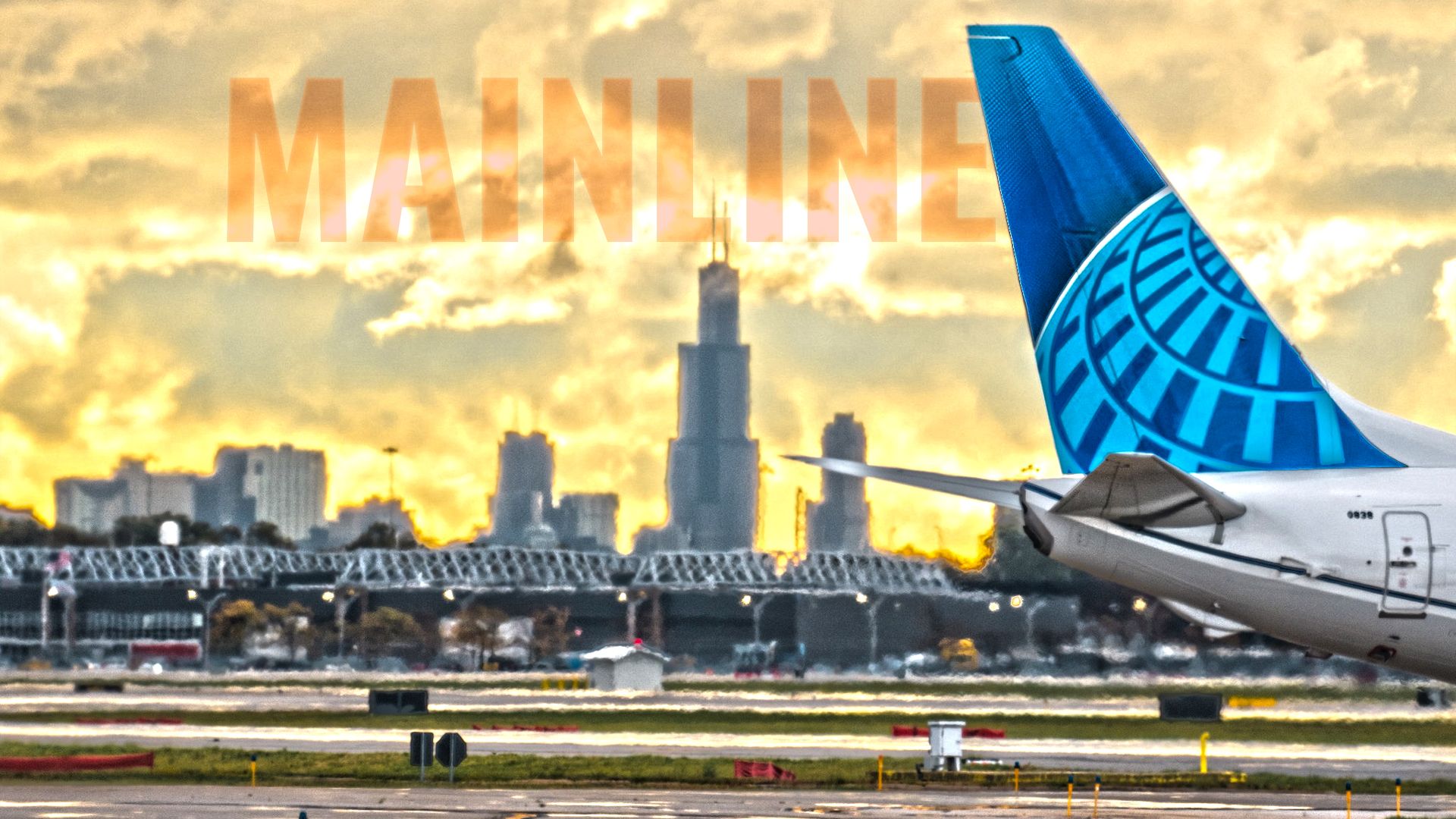Business
United Airlines Leads with World’s Largest Mainline Fleet in 2025

United Airlines has claimed the title of the world’s largest mainline fleet in 2025, boasting a remarkable total of 1,056 aircraft. This fleet, which does not include aircraft operated by alliance partners or regional subsidiaries, includes almost 250,000 seats available for passengers. This article explores the composition of United’s extensive fleet and highlights the competitive positions of American Airlines and Delta Air Lines, which follow closely behind.
United Airlines: A Massive Fleet Overview
United Airlines stands out as the dominant player in the airline industry with a diverse array of aircraft. Its most prevalent widebody option is the Boeing 777-200ER, with 55 units in service. However, the airline operates an extensive lineup of narrowbody jets, showcasing four variants of the Boeing 737, each with over 100 examples, including the 737-800 and 737-900ER.
The accompanying table provides an overview of the top five widebody and narrowbody aircraft in United Airlines’ fleet:
| Variant | In Fleet | Average Age (Years) | Total Capacity |
|---|---|---|---|
| Boeing 777-200ER | 55 | 25.7 | 15,524 |
| Boeing 787-9 | 47 | 6.6 | 11,822 |
| Boeing 767-300ER | 37 | 29.7 | 6,680 |
| Boeing 787-10 | 21 | 5.4 | 6,678 |
| Boeing 777-300ER | 22 | 7.9 | 7,700 |
| Boeing 737-800 | 141 | 21.7 | 23,406 |
| Boeing 737-900ER | 136 | 12.9 | 24,344 |
| Boeing 737 MAX 8 | 123 | 2.8 | 20,418 |
| Boeing 737 MAX 9 | 113 | 3.1 | 20,277 |
| Airbus A319-100 | 81 | 24 | 10,206 |
In addition to its current fleet, United Airlines maintains a significant array of retired aircraft, including older variants of the Boeing 737. The carrier has ordered 167 Boeing 737 MAX 10s to ensure its fleet remains competitive. Furthermore, a notable reduction in widebody jets includes the retirement of 44 Boeing 747-400s, reflecting a shift in operational strategy.
Delta Air Lines and American Airlines Close Behind
Delta Air Lines ranks second with a mainline fleet comprising 1,010 aircraft. Similar to United, Delta’s fleet features an emphasis on narrowbody jets, with 158 Boeing 737-900ERs and a substantial number of Airbus A321s. Delta’s widebody fleet remains modest, primarily consisting of smaller jets like the A330-900 and Boeing 767-300ER.
A snapshot of Delta’s fleet is as follows:
| Variant | In Fleet | Average Age (Years) | Total Capacity |
|---|---|---|---|
| Airbus A330-900 | 39 | 3 | 10,959 |
| Boeing 767-300ER | 39 | 29.1 | 8,404 |
| Airbus A350-900 | 38 | 5.3 | 12,813 |
| Airbus A330-300 | 31 | 16.8 | 8,742 |
| Boeing 767-400ER | 21 | 24.8 | 4,998 |
| Boeing 737-900ER | 163 | 9.8 | 29,193 |
| Airbus A321-200 | 127 | 6.9 | 24,257 |
| Boeing 757-200 | 96 | 28.6 | 17,181 |
| Airbus A321neo | 84 | 1.9 | 30,070 |
| Boeing 737-800 | 77 | 24.2 | 12,320 |
Delta Air Lines anticipates future growth with 267 firm commitments on its order sheet, including 100 Boeing 737 MAX 10s and investments in next-generation widebody aircraft.
American Airlines rounds out the top three with a mainline fleet of 1,001 aircraft. The airline operates a fleet entirely composed of Boeing widebody jets, including 67 Boeing 777s and various models of the Boeing 787 Dreamliner.
The distribution of American Airlines’ fleet is illustrated below:
| Variant | In Fleet | Average Age (Years) | Total Capacity |
|---|---|---|---|
| Boeing 777-200ER | 47 | 24.9 | 12,831 |
| Boeing 787-8 | 37 | 7.5 | 8,658 |
| Boeing 787-9 | 30 | 6.1 | 13,590 |
| Boeing 777-300ER | 20 | 11.7 | 6,080 |
| Boeing 737-800 | 303 | 16.0 | 52,116 |
| Airbus A321-200 | 218 | 13.2 | 40,012 |
| Airbus A319-100 | 132 | 21.6 | 16,896 |
| Boeing 737 MAX 8 | 81 | 4.2 | 17,200 |
| Airbus A321neo | 76 | 4.3 | 33,320 |
American Airlines is also poised for future expansion, with 300 commitments that include 115 Boeing 737 MAX 10s and a focus on the next generation of widebody aircraft.
Looking Ahead: United Airlines’ Future Plans
United Airlines’ extensive order sheet positions it to maintain its lead in the airline industry. The carrier has 666 jets currently awaiting delivery, which reflects an aging fleet with an average age of 16.9 years. This indicates a strategy to phase out older aircraft as new deliveries come in.
The breakdown of United’s orders reveals a heavy commitment to the Boeing 737 MAX 10, although certification delays have led the carrier to rely on the Boeing 737 MAX 9 for immediate capacity needs. Andrew Nocella, Chief Commercial Officer of United Airlines, stated, “In supply chain terms, we want to make sure we get our aircraft, so we’ve committed to the MAX 9. Until we know the MAX 10 is going to be delivered, we don’t want to have an aircraft that doesn’t arrive.”
United Airlines has opted not to add the Boeing 777X to its fleet, as its operational model does not align with the high-capacity jets. This decision aligns with the airline’s multi-hub approach, which allows for efficient long-haul operations without the need for new aircraft.
As United Airlines prepares for a busy travel year, it has scheduled 1.6 million flights in 2024, serving 944 routes. Its busiest domestic route connects Chicago to LaGuardia, with an average of 14 flights per day.
Moreover, the airline maintains a robust international presence, flying to 122 destinations outside of the United States. Toronto Pearson International Airport ranks as the busiest international destination, with 697 flights in May 2024 alone.
United Airlines’ strategy reflects its commitment to expanding and modernizing its fleet, ensuring it remains a key player in the competitive airline landscape.
-

 Health2 months ago
Health2 months agoNeurologist Warns Excessive Use of Supplements Can Harm Brain
-

 Health3 months ago
Health3 months agoFiona Phillips’ Husband Shares Heartfelt Update on Her Alzheimer’s Journey
-

 Science4 weeks ago
Science4 weeks agoBrian Cox Addresses Claims of Alien Probe in 3I/ATLAS Discovery
-

 Science3 weeks ago
Science3 weeks agoNASA Investigates Unusual Comet 3I/ATLAS; New Findings Emerge
-

 Science3 weeks ago
Science3 weeks agoScientists Examine 3I/ATLAS: Alien Artifact or Cosmic Oddity?
-

 Science3 weeks ago
Science3 weeks agoNASA Investigates Speedy Object 3I/ATLAS, Sparking Speculation
-

 Entertainment4 months ago
Entertainment4 months agoKerry Katona Discusses Future Baby Plans and Brian McFadden’s Wedding
-

 World2 months ago
World2 months agoCole Palmer’s Cryptic Message to Kobbie Mainoo Following Loan Talks
-

 Entertainment4 months ago
Entertainment4 months agoEmmerdale Faces Tension as Dylan and April’s Lives Hang in the Balance
-

 Science3 weeks ago
Science3 weeks agoNASA Scientists Explore Origins of 3I/ATLAS, a Fast-Moving Visitor
-

 Entertainment4 months ago
Entertainment4 months agoLove Island Star Toni Laite’s Mother Expresses Disappointment Over Coupling Decision
-

 Entertainment3 months ago
Entertainment3 months agoMajor Cast Changes at Coronation Street: Exits and Returns in 2025








